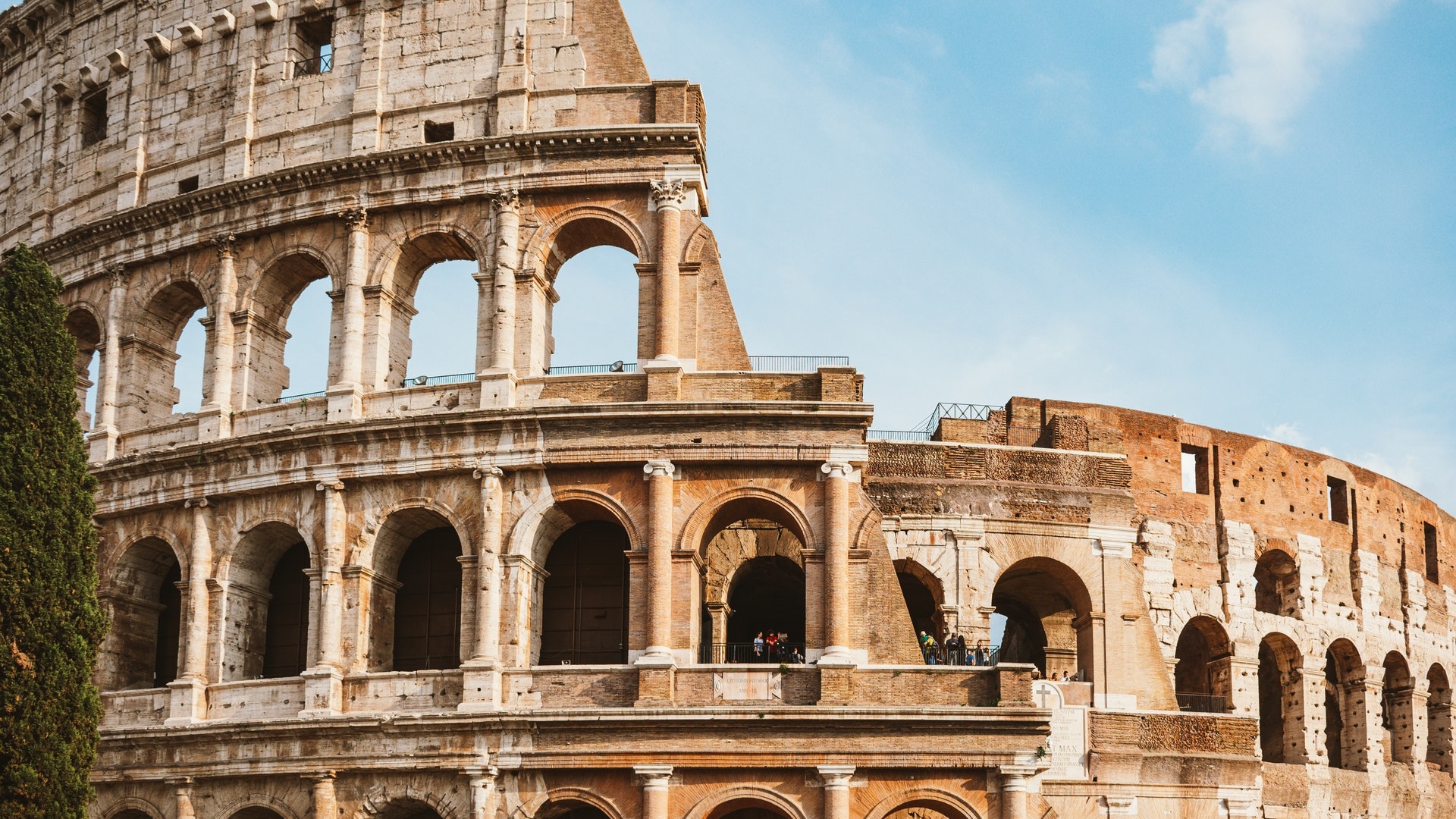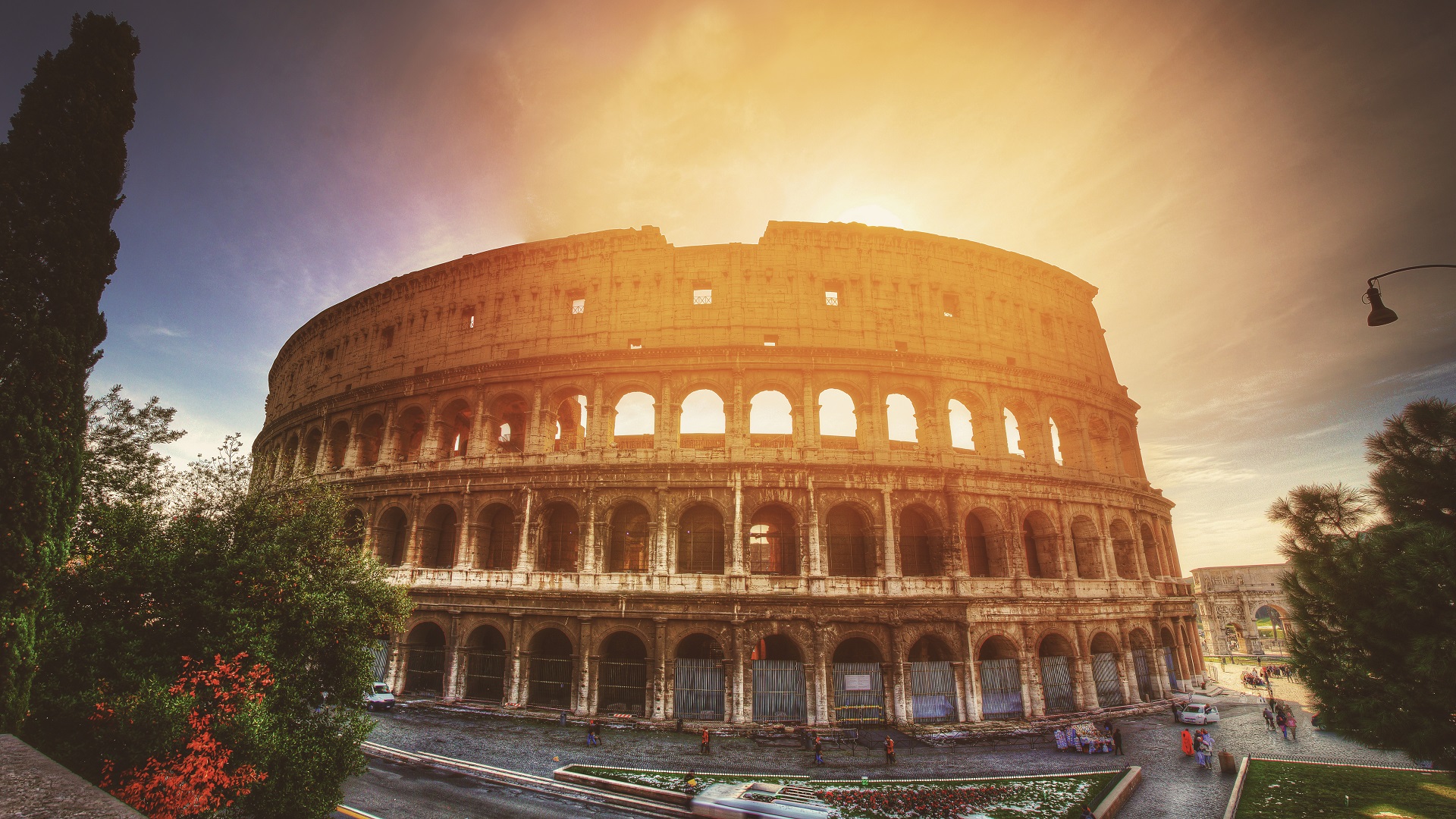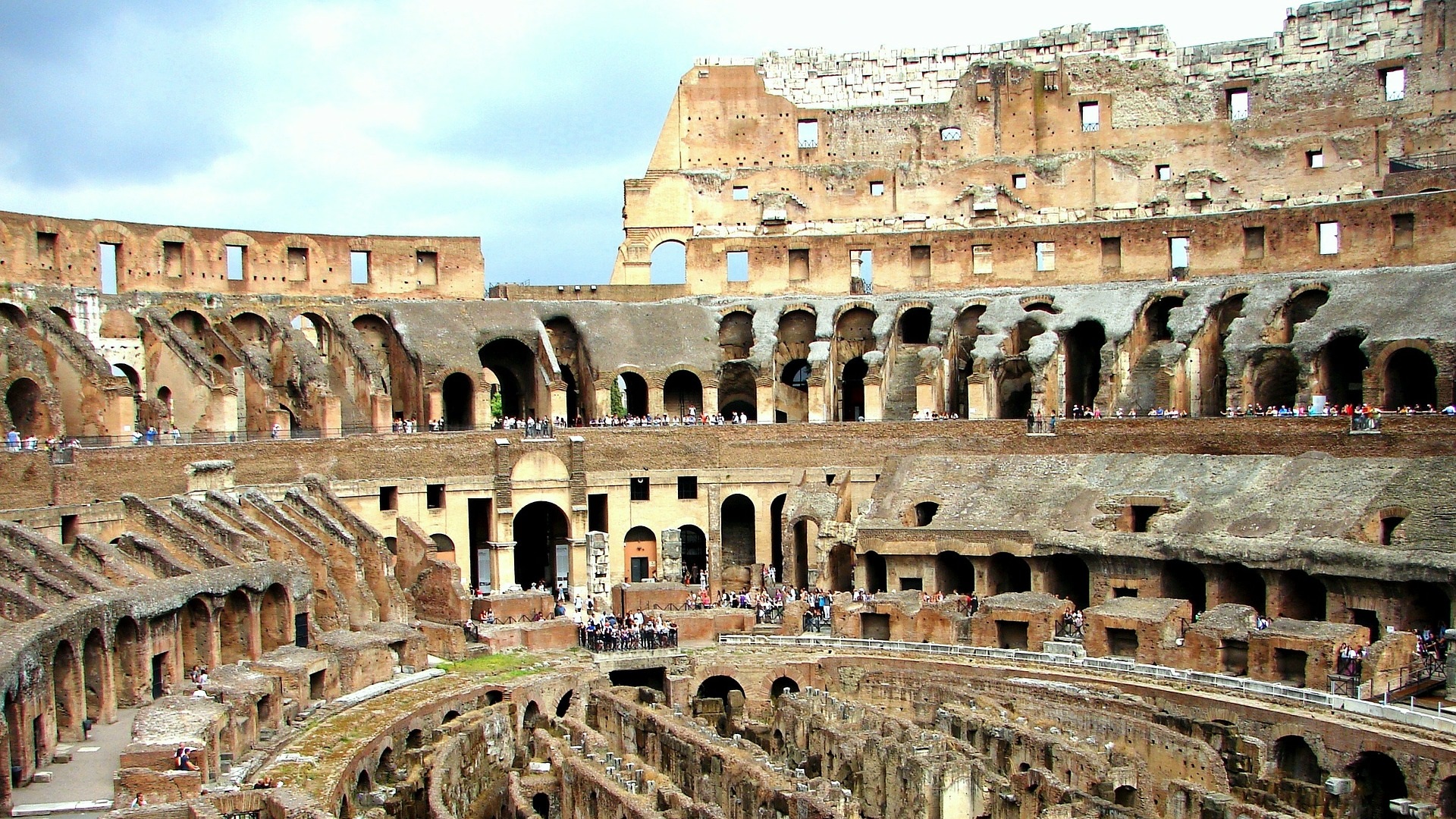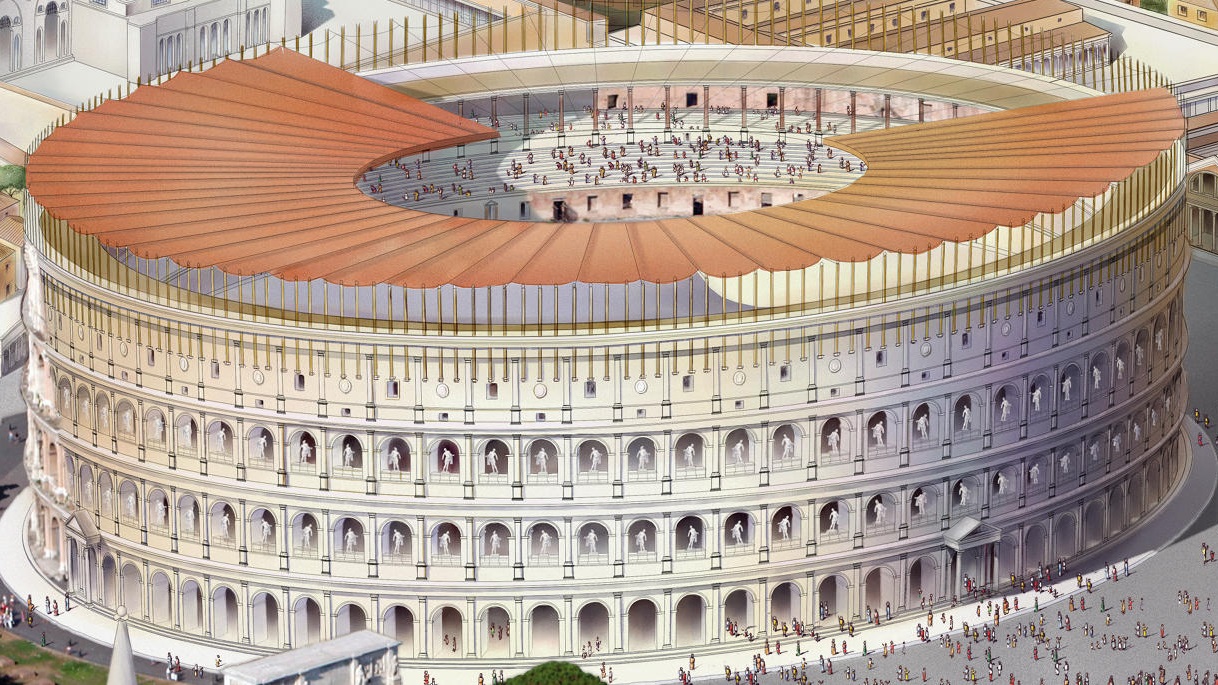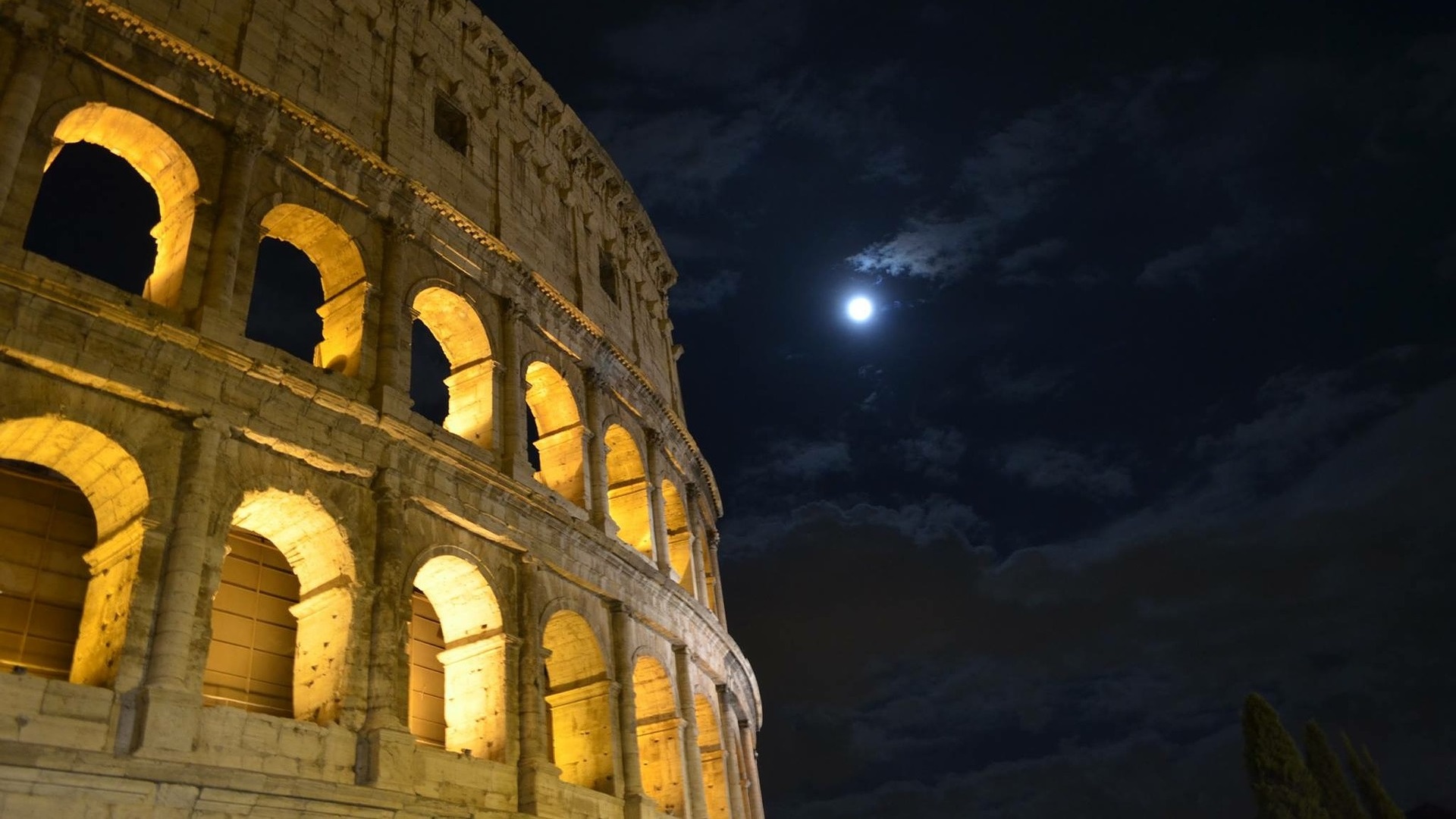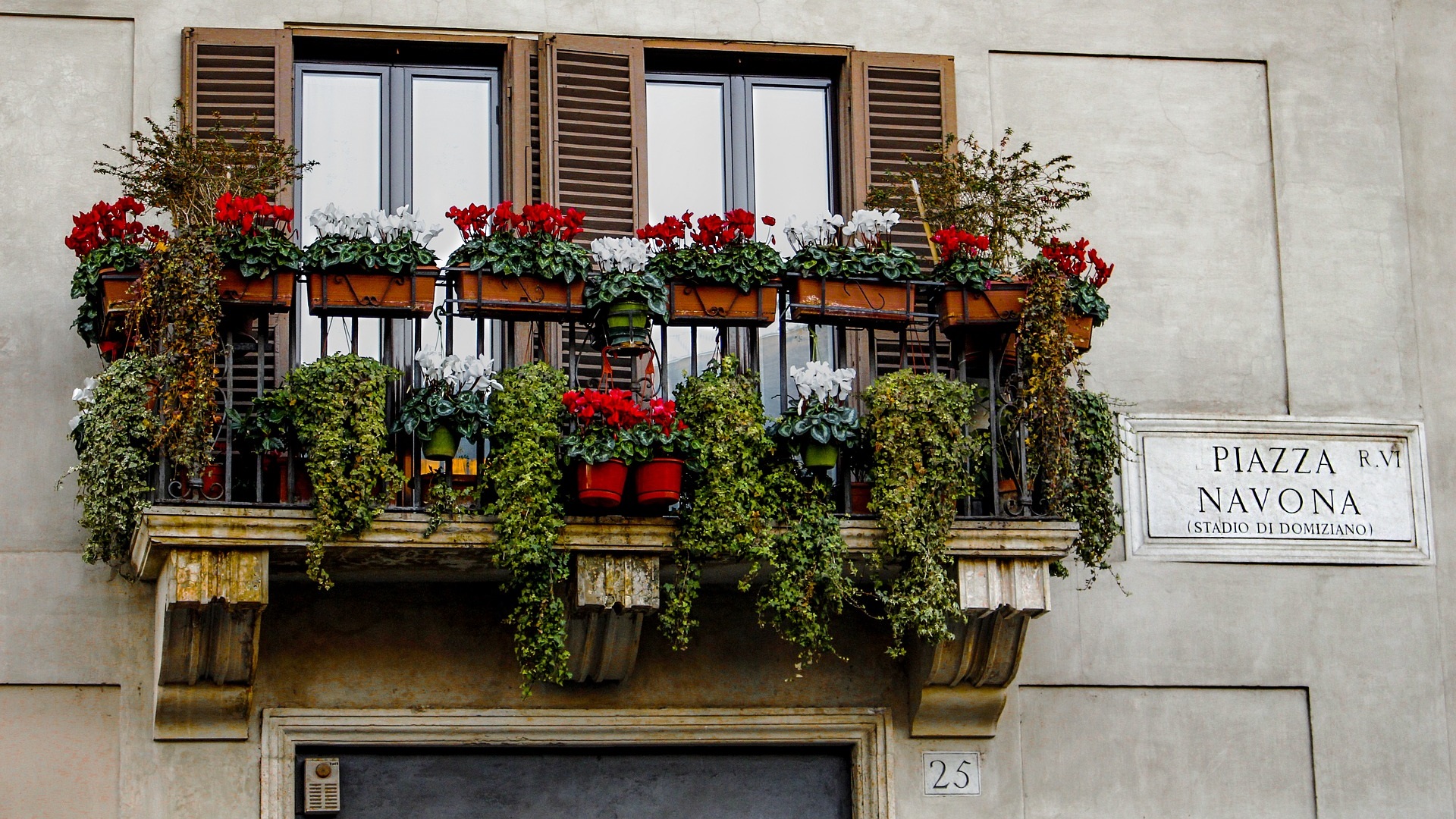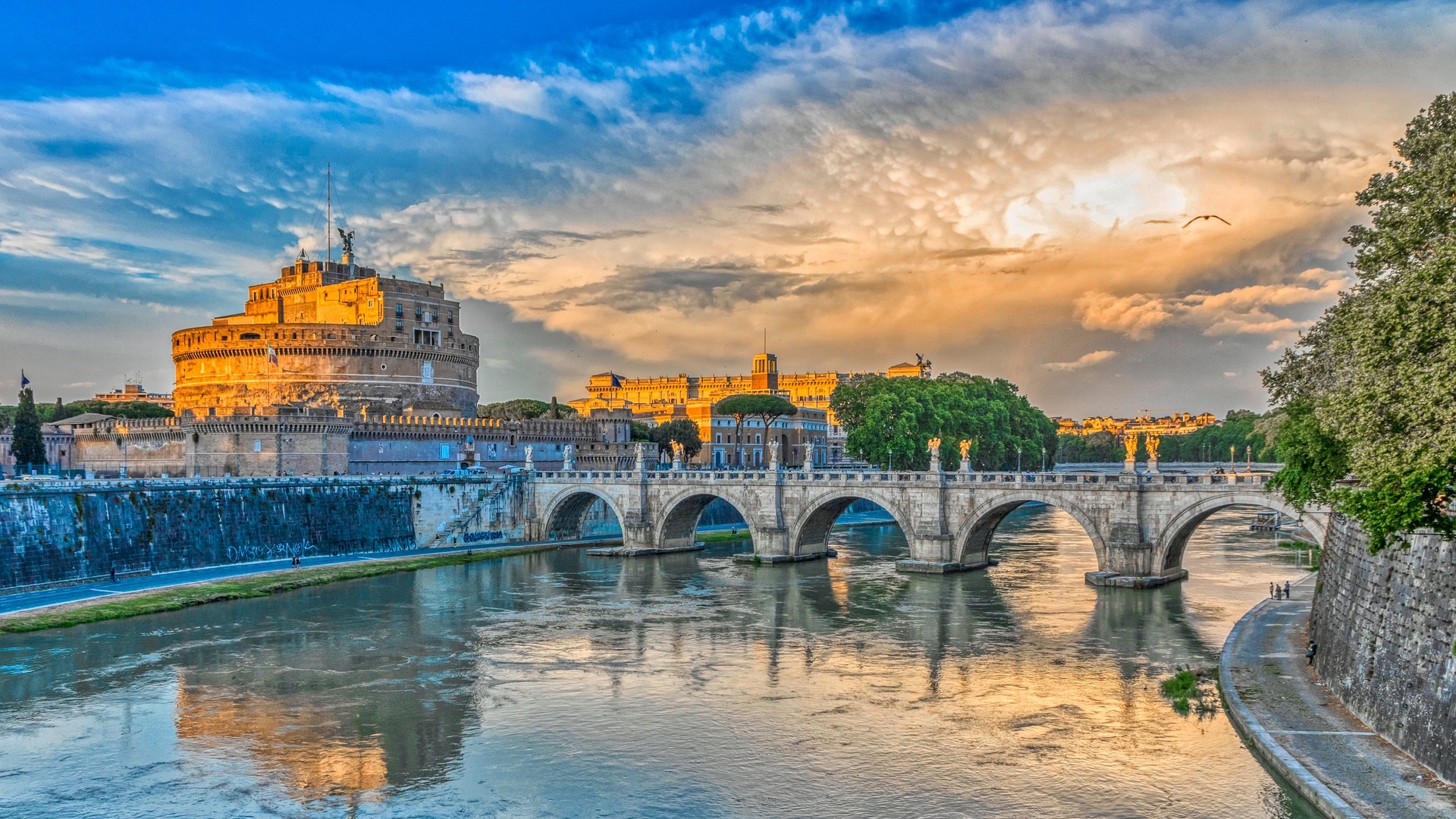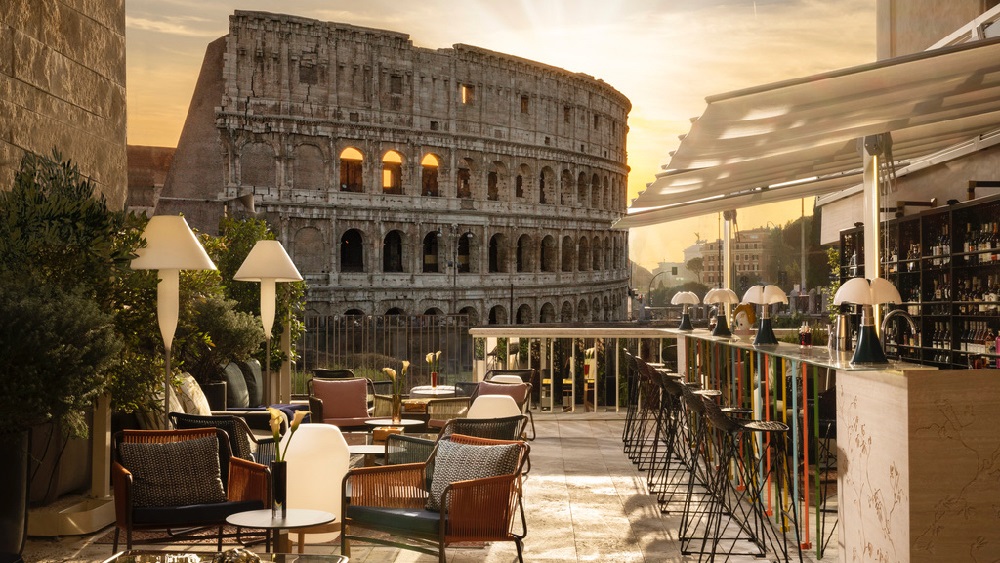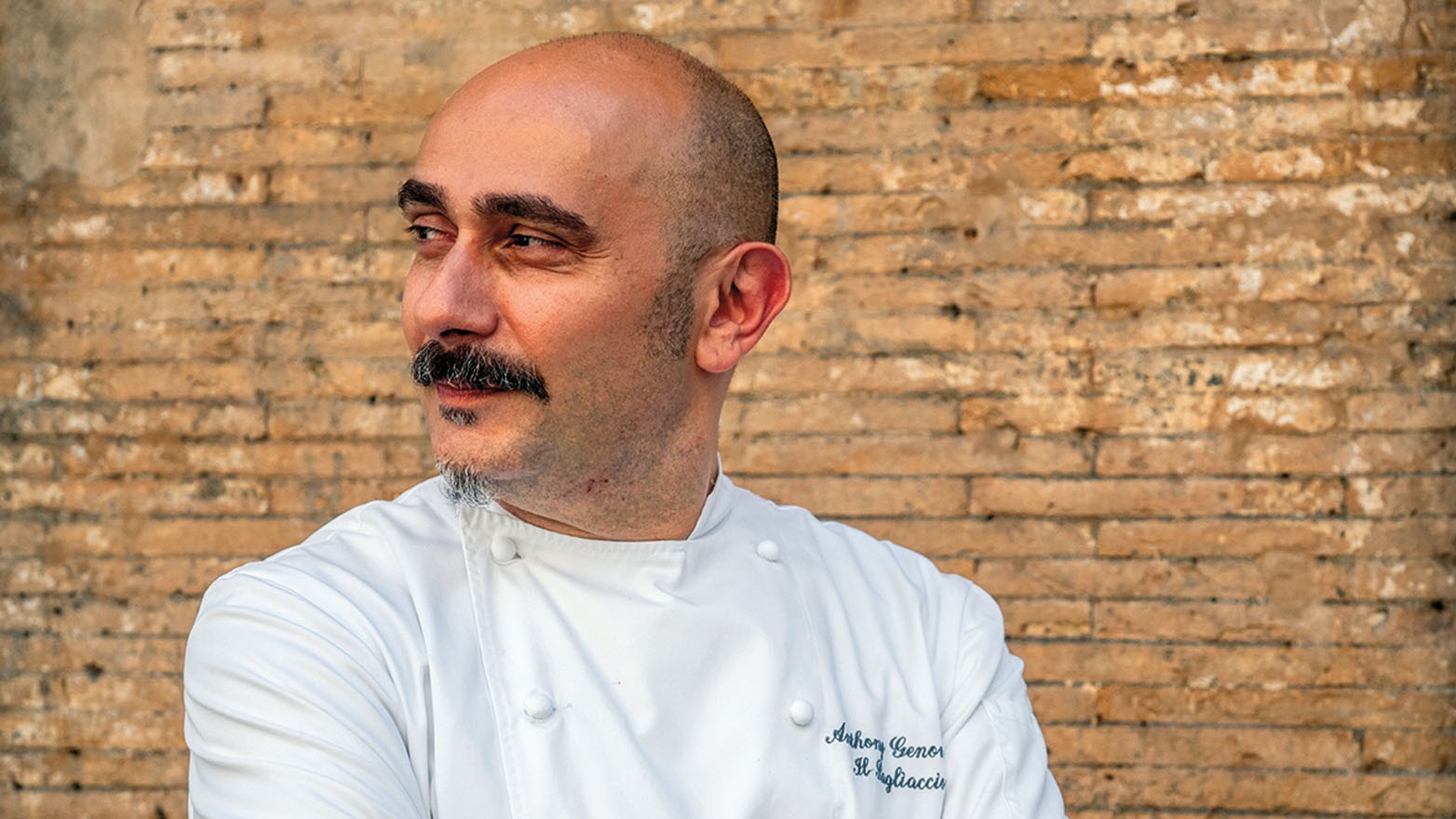Italy’s fast-paced, fashionable capital continues to be overshadowed by a lofty imperial past, mirrored in the ravaged remains of its majestic monuments. The mightiest of all its antiquities and the most infamous is the amphitheatre of gory games, the Colosseum.
Rome: Imperial, Iridescent And Inviting
Buoyant and boisterous, chaotic and chic, impetuous and inspired, vain and vibrant - the Italian capital is a coquettish cocktail of virtues and vices. Intensely traditional yet increasingly current, Rome’s promise of ‘dolce vita’ encompasses not just designer labels, extravagant hotels, gourmet cuisine and fine wines but also silky swirls of gelato, frothy cups of cappuccino and crispy, authentic pizzas in family-run trattorias.
A carnival of theatrical opulence for two and a half millennia, the Eternal City flaunts its antiquities beyond the enclosures of treasuries, vaults, and world-class museums. Endearing piazzas and exalted basilicas are bejewelled with exquisite masterpieces from art titans including Michelangelo, Caravaggio, Raphael, and Bernini. Secret stories and sudden surprises lie along every cobbled alley, behind every patchy terracotta wall and even under glass-covered floors of buildings crammed in the historic city centre. Ticking the bucket list in a city stuffed with historical remnants from the eras of Octavian, Julius Caesar and Hadrian, hundreds of churches and three UNESCO World Heritage Sites is no cakewalk. Set the tone right with an introduction to the most melodramatic and the most emblematic icon of Rome, the Colosseum.
De-construct the Colosseum
Up close with the most iconographic Roman-esque edifice on the planet, the symphony of symmetry is undeniable, even in its fractured, hacked, and scarred state. Ponder the marred majesty of the pockmarked phenomena nicknamed Colosseum as your mind drifts to an alien world of power-hungry Emperors, fame-fuelled gladiators, and blood-thirsty crowds.
It was 72 AD. All roads led to Rome. In a grand show of imperial prestige, Emperor Vespasian of the Flavian dynasty flagged off the construction of a gigantic stadium at a marshy terrain reclaimed by draining an artificial lake in Nero’s palace complex. Using the concrete and vaulted arches technique that the Romans had perfected in the building of aqueducts, 100,000 slaves were deployed to complete a gargantuan project in the record time of eight years. An outer facade of Travertine limestone was welded in place with 300 tons of iron clamps. Eighty identical arched entrances were installed to divide the 189 by 156 meters (620 by 513 feet) elliptical circumference of the four-storied behemoth. Completely clad in marble, the structure was decorated with Tuscan, Ionian and Corinthian columns and studded with statues of Gods and Emperors. The amphitheatre was designed with an enormous seating capacity for 50,000 spectators, who could enter and exit the building within a few minutes using the 80 arched gates. A gala opening was celebrated with a hundred days of gladiatorial games. The Flavian Amphitheatre was a spectacle for the world to see, and a true testament to Roman engineering. The tag Colosseum is believed to have had a connection with a colossal, gilded bronze statue that stood at the entrance.
Jaw-dropping marvels continued inside. The stadium was equipped with hundreds of fountains, aqueducts, efficient sewage and drainage system and even public toilets. Spectators were allocated tokens to find seats assigned according to their social standing. There were ringside marble seats for senators, knights and vestal virgins, wooden tiers for plebeians at the back, then top tiers for the masses. The pièce de résistance was a velarium, an ingenious system of awnings, held in place by ropes and controlled by sailors from the royal fleet. Scorching sunshine and sudden downpours could not be allowed to play spoilsport.
And then there was the stage. A central sandpit – arena - measuring 83 meters by 48 meters was spread over a wooden floor, with trap doors opening into subterranean passageways. In this underground back of house, slaves worked with clockwork precision to launch wild beasts, props, and sceneries into the arena for deadly and dramatic acts, using ingenious hoists and pulleys. In front of delirious crowds, gladiators and wild animals battled to the death in brutal and bloody games. Many other elaborate events including processions, sacrifices, executions, mythological dramas, and even mock sea battles were enacted here for public gratification.
Slaves, criminals, prisoners of war and willing citizens chose to become professional fighters in exchange for freedom or public acclaim. Gladiators had fan clubs like modern-day celebrities and their valour was celebrated as inscriptions on artefacts. Live entertainment, thrilling action and dangerous sport at the Colosseum tempered social unrest, fired warrior libido in peaceful times, and stoked citizens’ ego by having them decide the fate of failed gladiators. Cruel was cool and the circle of death was the hottest ticket in town.
The shows and the killings continued for years. With the collapse of the Western Roman Empire, earthquakes and vandalism, two-thirds of the original structure was destroyed, until a massive restoration project began during the 1990s.
Come back at night to gaze at the forgiving soft spotlights. No more blood, sweat, roars and screams, just deafening stony, eerie silence. Shudder.
Rome-ance the classics
A short walk from Italy’s most visited monument, sprawl the scattered remains of ancient Rome on Palatine Hill, where the Empire rose to unprecedented heights and eventually declined. Epic events unfolded here - from Mark Anthony’s speech about Julius Caesar to Caesar’s own cremation, this was where pages of history were written. Wander through five acres of desolate dilapidation, imagining the former glory of broken temples, basilicas, monuments, and law courts.
Hop on a vintage Vespa and recreate your own ‘Roman Holiday’ movie scene through the historic heart of the city, Centro Storico. Soak up the sun at Piazza Venezia, Rome’s most elaborate Baroque square, slurp gelato near Bernini’s fountain at Piazza Navona, be seen at Piazza di Spagna’s Spanish Steps, then celebrate your love for poetry at the house-turned-museum of poet John Keats. Pick artichokes at the colourful morning market of Campo de’ Fiori and flip the obligatory coin at the lavishly sculpted Trevi Fountain. Stand under the world’s largest unreinforced concrete dome in the former Roman temple, the Pantheon. While you are there, peer at sunlight pouring in through the large oculus, gawp at the sculptures and frescoes adorning the circular walls and pay homage at Raphael’s Tomb.
Embrace peace in the tree-lined walkways, flower gardens and fountains of Villa Borghese park and study Caravaggio, Titian, Raphael, Rubens, and Bernini classics in the museum. Salute the genius of Roman architects at the Vatican City, drown in the resplendence of the Raphael Rooms and drool over Michelangelo’s magnum opus in the Sistine Chapel with an exclusive after-hours tour. Bump up the privy factor with a gala dinner inside the Vatican Museums. The view of St Peter’s Basilica is divine.
Applaud the alternative
For a breather from Rome’s mega sights, explore some of its authentic Quartiers, preferably without an agenda or indeed a map. Cross the River Tiber to the bohemian, ivy-lined streets of Travestere on the West Bank, in pursuit of avant-garde craft beer pubs, artisanal stores and the mosaic-filled church of Santa Cecilia. In exuberant San Lorenzo, on the other side of the river, chase shabby chic at vintage stores, stroll in Rome’s largest cemetery and decode themes of avant-garde street art.
View-mongers and camera-fiends can go on an offbeat trail to some of the most photogenic spots in the city. Climb the Avertine Hill – one of Seven Hills on which ancient Rome was built - to seek out the Piazza Knights of Malta and peep through the secret keyhole of a door that frames the cupola of St Peter’s. Next, head to Parco Savello, a hidden oasis rich with grassy greens and shady orange trees to gloat over the panorama of the national monument in Piazza Venezia and the iconic St Paul’s dome. Another lesser-known location is the circular fortress of Castel Sant’Angelo, built as a mausoleum for Emperor Hadrian and used as a hideout for Pope Clement VII in 1527. Uninterrupted city vistas and scintillating sunsets from the roof are pure bliss.
For the incorrigible tour hunter hoping to venture off the beaten path, bountiful bait can be found along the continent’s oldest super-highway, the Appian Way. Stride in the footsteps of Caesars, saints and soldiers on the ancient, paved road where slave leader Spartacus was crucified. Ruminate over Roman ruins strewn over parkland or train to be a Colosseum hero at a gladiator school. If dark tourism is your poison, burrow into Rome’s underground where an eerie Capuchin Crypt - Bone Chapel - is decorated with the skeletons and decaying remains of 4,000 Capuchin monks. Chandeliers made of vertebrae - arty or atrocious?
Do as the Romans do
If money is no object, binge on bespoke in the city where designers constantly reinvent the wheel of fashion. From customised spectacles, wristwatches, tailoring, footwear, leather goods, perfumes and beauty treatments, there are snooty specialist shops to cater to every exorbitant craving. Indulge your deep desire for high-end Italian luxury labels in the shopping streets of Via dei Corso, Via Cola di Rienzo, Via Condotti and Via Frattina.
Bite into a slice of everyday exotic. Linger at street-side cafés, people-watch in open piazzas, jive away in a cocktail bar or chat with a stranger over an aperitivo. Take the gastronomic route with a food tour. Join a cooking class with a chef to make your handmade pasta or aphrodisiacal tiramisu. Eat, roam, repeat. Mimic the melodious vowels of animated conversations, tail the delicious aroma of home cooking, forage the back-alleys for fluttering laundry lines and follow the outline of the Apennines against the ancient urbanscape until you find your favourite face of Rome. So, what made you smile and swoon in the Eternal City?
The Romans have always loved their sports. Thankfully, sport in Rome and indeed Italy no longer ends in the violent, gladiatorial death of one of the players! On New Year’s Day, divers leap into the River Tiber, the city hosts annual international showjumping events, a clay court tennis ATP tournament, the Giro d’Italia bicycle race, rugby union at Stadio Olimpico and of course for followers of football, there is Lazio and AS Roma to whet the appetite.
Where to eat and drink in Rome
Labelled as the culinary star of the city, La Pergola in Rome Cavalieri Waldorf Astoria prides itself for show-stopping Italian gourmet dining set against a sunset over the Vatican. The Stuff of dreams. Three Michelin stars – courtesy of masterchef Heinz Beck - make it the highest-rated restaurant in Rome.
AROMA, the rooftop restaurant of Palazzo Manfredi serves up a Michelin-starred menu of classic and contemporary Italian dishes, sophisticated cocktails, and connoisseur-standard wines. The wide-angle Colosseum view bumps up the flawless flavours. Chef Giuseppe Di Iorio is in residence creating classic Roman dishes.
Relais & Châteaux restaurant Il Pagliaccio holds two Michelin stars for its upper-crust, creative haute cuisine in a chic yet tranquil space. Signature dishes on the tasting menu include foie gras, amberjack and lacquered duck. Chef Anthony Genovese offers a range of menus but the ten course – Circus – is a delight.
Where to stay in Rome
There are infinite options to savour the ambience of the city of Seven Hills, but the historic centre is a great choice for all the sights that are within easy reach, apart from shops, cafes, and bars. Trastevere comes a close second for its medieval atmosphere and buzzing nightlife.
Read our BusinessClass.com guide to the best hotels in Rome.
Navigating the city
Driving yourself in Rome is not for the faint-hearted, but if you must, consider parking after entering the city limits to skip heavy traffic and move comfortably in pedestrian-only areas. Since most of the sights are clustered close together in the central historic district, Rome is best explored on foot. Metros or taxis are easily available to reach Vatican City or far-flung landmarks and neighbourhoods.
How to get there
You can fly to Leonardo da Vinci-Fiumicino Airport (FCO) from most international airports.
BusinessClass.com searches hundreds of travel sites at once to help you find the best premium travel offers for both flights to and from the city and accommodation in Rome.

